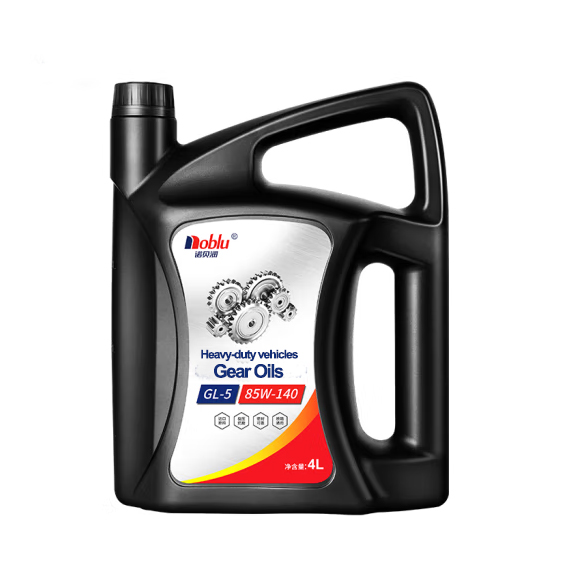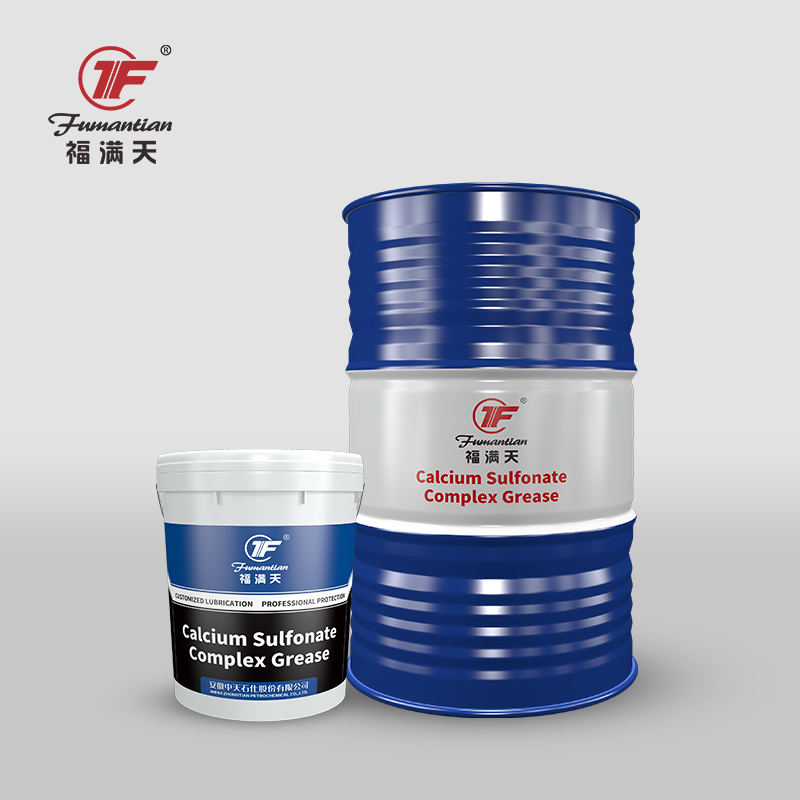Zhongtian Petrochemical, established in 1998, is a national leader in lubricating oil research, production, and services. As an industrial greases supplier, we boast advanced facilities, 200,000-ton annual capacity, and over 1,000 product varieties. Our reputation for excellence ranks us among the industry's top private enterprises.
The Superiority of Industrial Greases:
Industrial greases emerge as the unsung heroes of our manufacturing ecosystems, their multifaceted advantages propelling them to the forefront of engineering innovation. From mitigating friction and wear to guarding against corrosion, these specialized lubricants orchestrate a harmonious symphony of precision and efficiency. Moreover, their ability to withstand extreme temperatures and diverse environmental conditions renders them indispensable in a myriad of industrial applications, from heavy-duty construction to the delicate mechanisms of manufacturing facilities.
Unwavering Protection:
Friction, the nemesis of all moving parts, finds its match in the protective embrace of industrial greases. These unwavering lubricants interpose themselves between metallic surfaces, creating a microscopic barrier that effectively reduces friction and its destructive consequences. This friction-mitigating prowess not only extends the lifespan of our machinery but also enhances its overall performance, ensuring uninterrupted operation and maximizing productivity.
Preserving Integrity:
Corrosion, the arch nemesis of metal components, is met with an impenetrable barrier in the form of industrial greases. These potent lubricants form a protective film on metallic surfaces, effectively warding off corrosive agents and safeguarding the integrity of our valuable machinery. By preventing the insidious advance of corrosion, industrial greases ensure the longevity of critical components, reducing unexpected downtime and safeguarding against costly repairs.
Temperature Extremes:
In the unforgiving crucible of extreme temperatures, industrial greases showcase their unwavering resilience. These specialized lubricants possess an uncanny ability to withstand both scorching heat and frigid cold, maintaining their protective properties regardless of the environmental challenges they may face. This thermal stability ensures optimal machine performance even under the most adverse conditions, allowing for seamless operation in industries such as metalworking and food processing, where temperature fluctuations are a constant reality.
Diverse Applications:
The versatility of industrial greases knows no bounds, extending their reach across a kaleidoscope of industrial applications. From the heavy-duty demands of construction equipment to the precision machinations of manufacturing facilities, these lubricants play a pivotal role, ensuring smooth operation and safeguarding machinery from premature wear and tear. Their presence is equally indispensable in the transportation sector, where they contribute to the safe and efficient movement of people and goods, as well as in the energy industry, where they facilitate the seamless flow of power generation and transmission.
The Anatomy of an Industrial Grease:
Industrial greases are not merely simple lubricants; they are meticulously engineered masterpieces, each tailored to meet the specific demands of diverse applications. Their composition is a symphony of base oils, thickeners, and additives, each element contributing its unique properties to the overall performance of the grease.
Base Oils: The Foundation of Lubricating Power
The foundation upon which industrial greases are built is a carefully selected base oil, typically derived from mineral, synthetic, or vegetable sources. These base oils provide the essential lubricating film, reducing friction and wear on critical surfaces. The choice of base oil depends on the specific application, with mineral oils offering cost-effectiveness for general-purpose applications, synthetic oils providing superior performance under extreme conditions, and vegetable-based oils exhibiting environmentally friendly credentials.
Thickeners: The Architects of Grease Consistency
Thickeners, the master architects of grease consistency, play a crucial role in determining the texture and behavior of industrial greases. These agents, typically composed of soaps, polymers, or inorganic materials, impart the semi-solid form that distinguishes greases from liquid oils. The type and concentration of thickener employed dictate the grease's hardness, flowability, and ability to adhere to surfaces, ensuring optimal performance in different operating conditions.
Additives: The Catalysts of Enhanced Performance
Additives, the unsung heroes of industrial greases, serve as catalysts, enhancing the overall performance of these lubricants. These specialized ingredients, added in carefully controlled quantities, impart specific properties to the grease, such as improved oxidation resistance, corrosion protection, or extreme pressure capabilities. Their presence elevates the grease's ability to withstand harsh environments and demanding applications, maximizing the lifespan and efficiency of machinery.
Choosing the Right Industrial Grease:
Selecting the appropriate industrial grease for a specific application is akin to navigating a complex labyrinth, requiring careful consideration of multiple factors. Determining the correct grease demands an intimate understanding of the operating conditions, the type of machinery involved, and the desired performance outcomes.
Viscosity: The Key to Flow and Load-Bearing Capacity
Viscosity, the measure of a grease's resistance to flow, plays a pivotal role in determining its suitability for different applications. Greases with higher viscosity provide a thicker lubricating film, offering enhanced load-bearing capacity and protection against wear. Conversely, lower-viscosity greases flow more readily, making them ideal for applications requiring ease of application or operation in colder temperatures.
NLGI Grade: A Standardized Measure of Consistency
The National Lubricating Grease Institute (NLGI) has established a standardized scale, ranging from 000 to 6, to classify the consistency of industrial greases. This grading system provides a common reference point, enabling engineers and technicians to select the grease with the appropriate consistency for their specific needs. Softer greases, with lower NLGI grades, are more fluid and suitable for applications requiring easy application or operation in low-temperature environments. Conversely, harder greases, with higher NLGI grades, offer greater resistance to flow and are ideal for heavy-duty applications involving high loads or extreme temperatures.
Additives: Tailoring Performance to Specific Applications
Additives, the secret ingredients of industrial greases, play a crucial role in customizing their performance to meet the demands of specific applications. These specialized additives can enhance the grease's resistance to oxidation, corrosion, extreme pressure, or water washout. By carefully selecting the appropriate additives, engineers can tailor the grease to provide optimal protection and performance in even the most challenging operating conditions.
Expert Insights: Unveiling the Secrets of Industrial Grease Application
Proper application of industrial greases is an art form, demanding meticulous attention to detail and a deep understanding of the underlying principles. Experienced technicians, armed with their accumulated knowledge and expertise, offer invaluable insights into the intricacies of grease application, ensuring optimal performance and extended equipment lifespan.
Frequency: Striking a Balance Between Protection and Over-Lubrication
Determining the appropriate frequency for grease application is a delicate balancing act, requiring a careful consideration of factors such as operating conditions, grease type, and equipment design. Over-lubrication, while tempting in the pursuit of enhanced protection, can lead to premature grease breakdown, increased operating temperatures, and potential damage to seals and bearings. Conversely, under-lubrication can result in inadequate protection, leading to accelerated wear and tear on critical components. Experienced technicians rely on their expertise and knowledge of industry best practices to establish optimal greasing intervals, ensuring maximum equipment performance and longevity.
Quantity: Ensuring Adequate Coverage Without Excess
Applying the correct quantity of grease is paramount to achieving optimal lubrication without inviting trouble. Excess grease can lead to churning, excessive heat generation, and premature breakdown of the lubricant. Conversely, insufficient grease application can result in inadequate protection and premature wear on critical components. Experienced technicians possess a keen understanding of the grease requirements for different types of equipment and operating conditions, enabling them to apply just the right amount of lubricant, ensuring effective protection without overdoing it.
Placement: Targeting Critical Contact Points for Maximum Benefit
Proper placement of grease is essential to ensure it reaches the critical contact points where protection is most needed. Experienced technicians employ a variety of techniques, such as using grease guns, brushes, or centralized lubrication systems, to deliver grease precisely to the desired locations. By targeting these critical contact points, they ensure that the grease forms a protective film, reducing friction and wear, and extending the lifespan of equipment components.
Troubleshooting Common Industrial Grease Issues:
Even with the utmost care and attention, industrial grease applications can encounter occasional hiccups. Understanding the potential issues and their underlying causes empowers engineers and technicians to diagnose and resolve these challenges promptly, minimizing downtime and ensuring smooth operation.
Hardening:
Hardening of grease, a phenomenon characterized by its solidification, can occur due to various factors. Excessive heat, the presence of contaminants, or the use of incompatible greases can all contribute to this undesirable transformation. Hardened grease loses its lubricating properties, leading to increased friction and accelerated wear on equipment components. Experienced technicians employ a systematic approach to identify the root cause of hardening, addressing the underlying issue to restore optimal grease performance.
Bleeding:
Bleeding, the unwelcome leakage of grease from lubrication points, can result from several factors. Overfilling, improper grease selection, or worn seals can all lead to this messy issue. Bleeding not only wastes valuable lubricant but also can attract dirt and contaminants, potentially damaging equipment components. Experienced technicians possess the expertise to identify the source of bleeding and implement effective solutions, ensuring grease stays where it belongs.
Contamination:
Contamination of grease by external agents, such as dirt, water, or incompatible substances, can wreak havoc on its performance. Contaminated grease loses its lubricating properties, leading to increased friction, accelerated wear, and potential equipment failure. Experienced technicians employ preventive measures, such as proper storage, handling


































